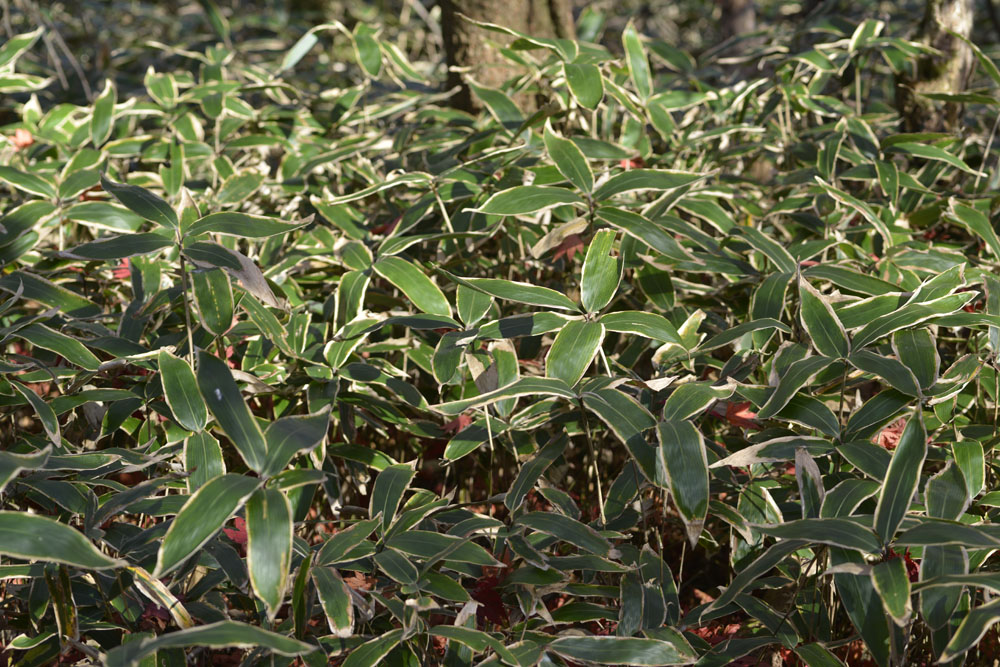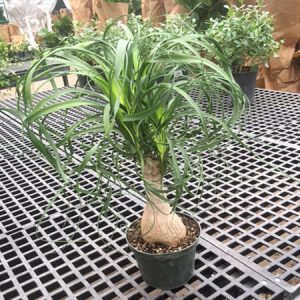Description
Sasa –
There are 40-50 small to medium sized woody bamboos, in this genus. Closely related to Sasaella, to which several species of Sasa have now been transferred. They naturally occur in damp hollows and woodlands in Eastern Asia and Japan. From running rhizomes it produces ascending culms which are smooth and cylindrical, with persistent, bristly sheaths and a white waxy bloom beneath the nodes. Most produce large, usually broad, tick, toothed, and checkered leaves. Some forms wither and turn beige at the edges in winter, giving a variegated effect. Use as a groundcover under trees, or as a hedge, they tolerate deep shade.
Grow in fertile, humus rich, moist but well drained soil in full sun to deep shade, tolerant of most soil, but avoid dry soils when planting in full sun. To limit spread, plant in containers and plung into the soil. Divide in spring.
Prone to slugs.
S. masumuneana ‘Albostriata’ – Sasaella masumuneana f. albostriata – This low growing, moderately spreading bamboo can grow to 5′ feet tall with an indefinite spread. It produces very slender, green or brown culms, producing a single branch at each node. The branches carry narrowly elliptic, mid green leaves, to 7″ long, are conspicuously white striped when young, becoming yellow shaded as they mature in autumn, and fading in winter.
Zones 7-9





